The NYPL's special collections room has become 'Club Didion'
April 3, 2025, noon
Didion kept everything, even ongoing correspondence to try to cancel her daughter’s Columbia House Record Club membership in the 1980s. It's all now at the NYPL.
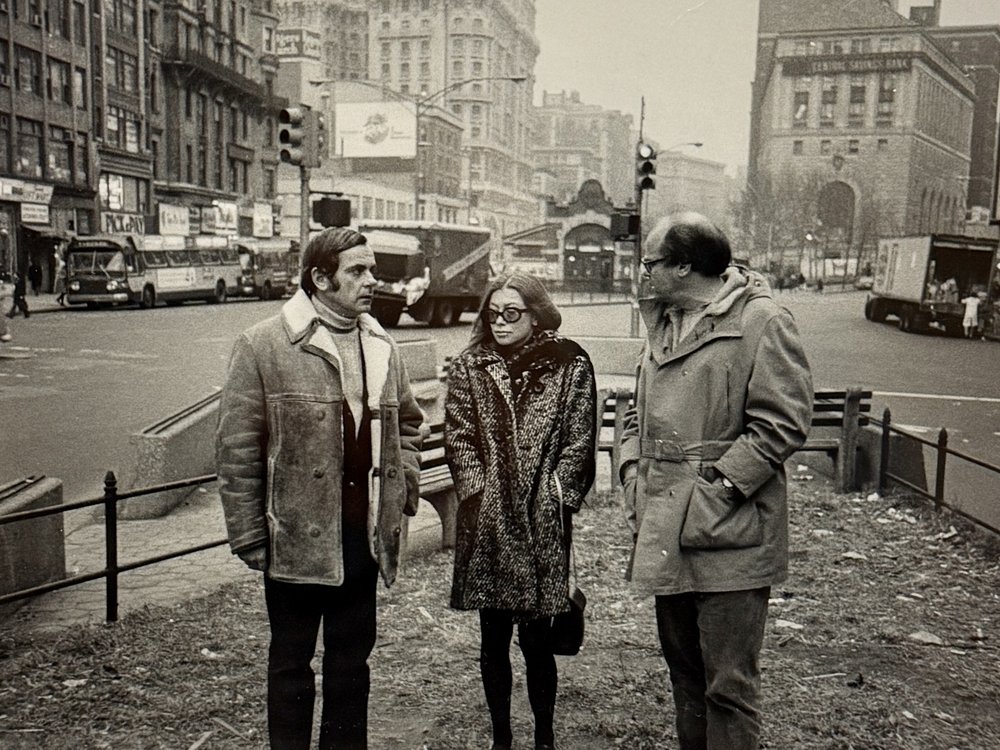
On an ordinary weekday in the New York Public Library’s Brooke Russell Astor Reading Room for Rare Books and Manuscripts, a researcher, if there is one, is likely working alone.
That changed when the Joan Didion and John Gregory Dunne archives opened on March 26. Since then, the scholarship center tucked in a third-floor corner of the library’s Beaux-Arts main branch building has been packed.
“It’s quite a scene,” said Lesley Blume, an author and journalist who was there on day one to research her forthcoming book about the many journalists, including Didion and Truman Capote, who raced to cover the Manson Family saga in real time.
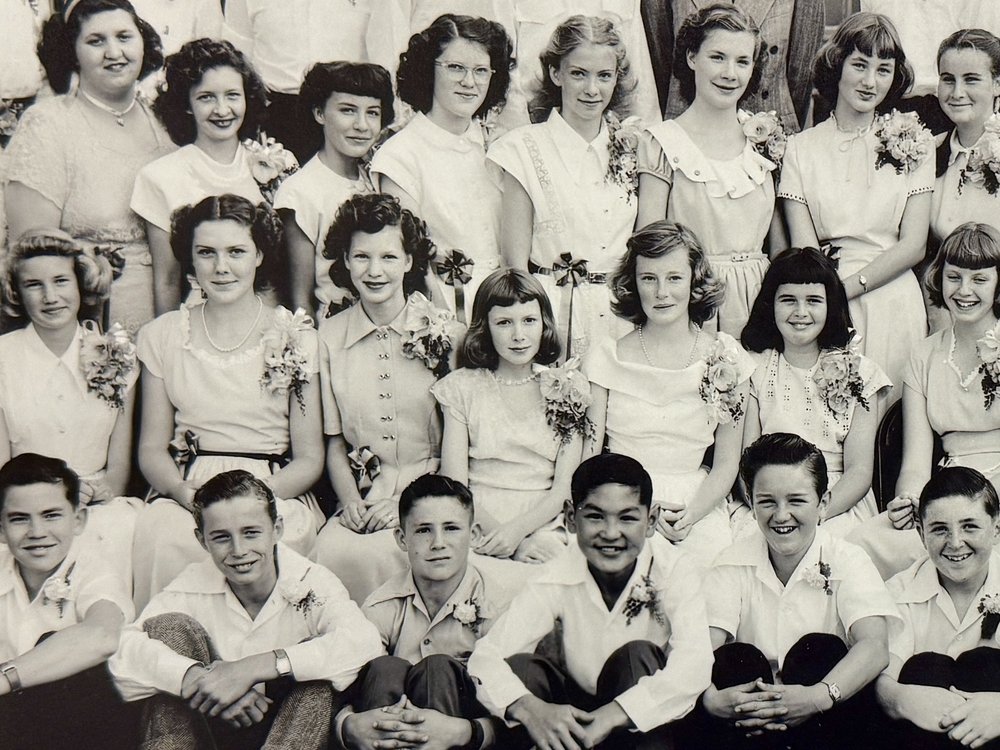
Blume said she flew in from Los Angeles for the very first public appointment the library offered.
“I’ve spent a lot of time in the special collections room, and it’s never a situation where every desk is filled,” she said.
Like all the NYPL archives, the Didion and Dunne collection is open to anyone with a library card. But unlike the library’s popular museum-style exhibitions, nothing is on display — the archive is a scholarly resource that requires booking an appointment, navigating a 68-page collection guide (box 8, folder 1: “Wacko Mail” 1984-2001), and digging through, one at a time, up to 336 boxes of the literary power couple’s things, which library staff members retrieve from the stacks underneath Bryant Park.
“The Didion and Dunne papers have generated unusually high levels of interest compared to past archive openings,” a NYPL spokesperson said in an email.
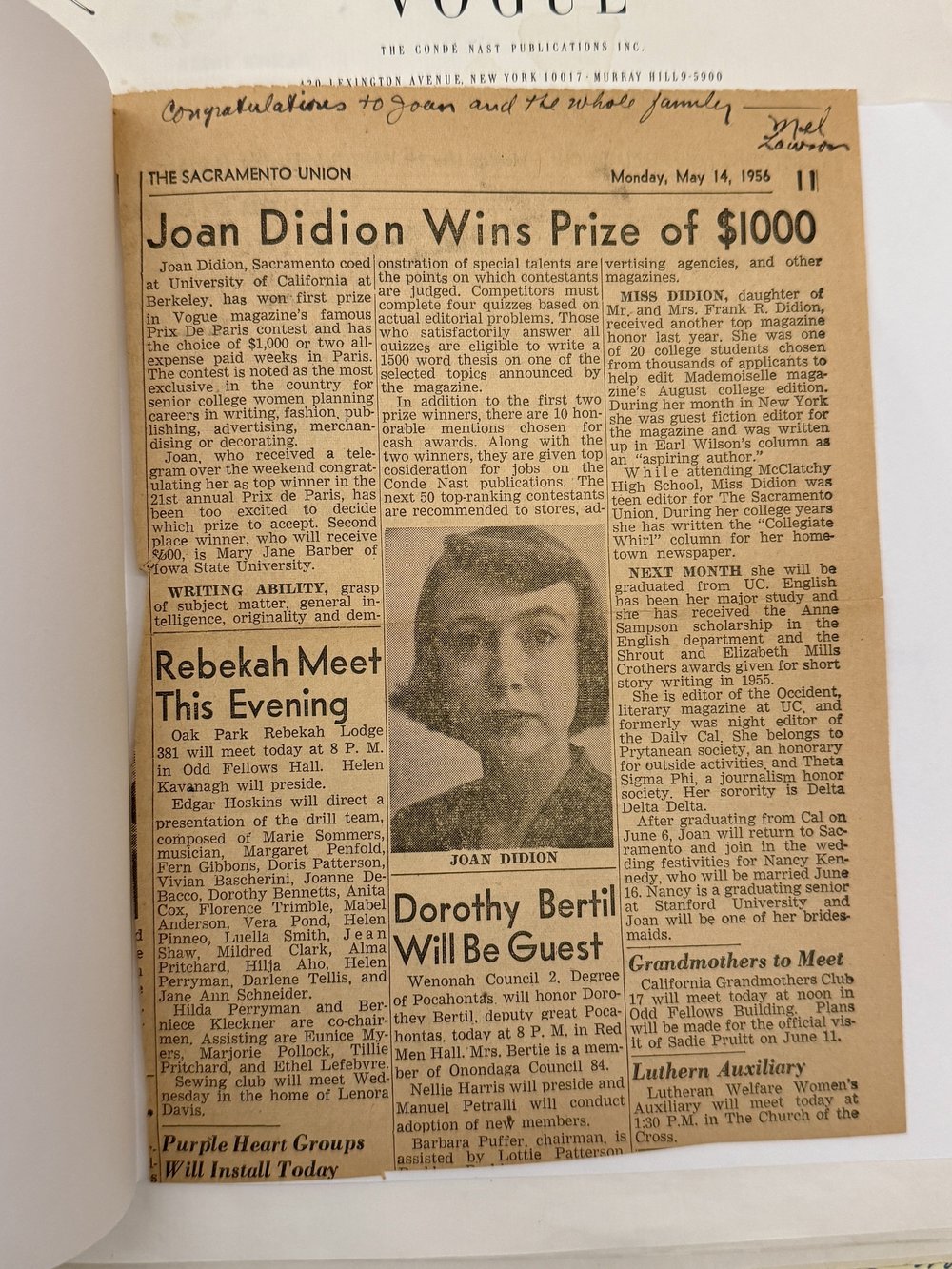
“It’s crazy. There’s so many boxes and it’s just overwhelming,” said Clara Champagne, a doctoral candidate at the University of Montreal who is writing her dissertation on Didion’s conceptions of journalistic knowledge and truth.
Champagne, who is spending roughly 25 days in the special collections room for her research, said she’d never seen it this full. She spotted Didion biographer Evelyn McDonnell reading quietly next to a writer with the Los Angeles Review of Books, covering a forthcoming publication of Didion’s post-therapy diaries.
“There are 1,000 different ways of approaching [this collection] and as many researchers who will do that work,” said Meredith Mann, an assistant curator at the library.
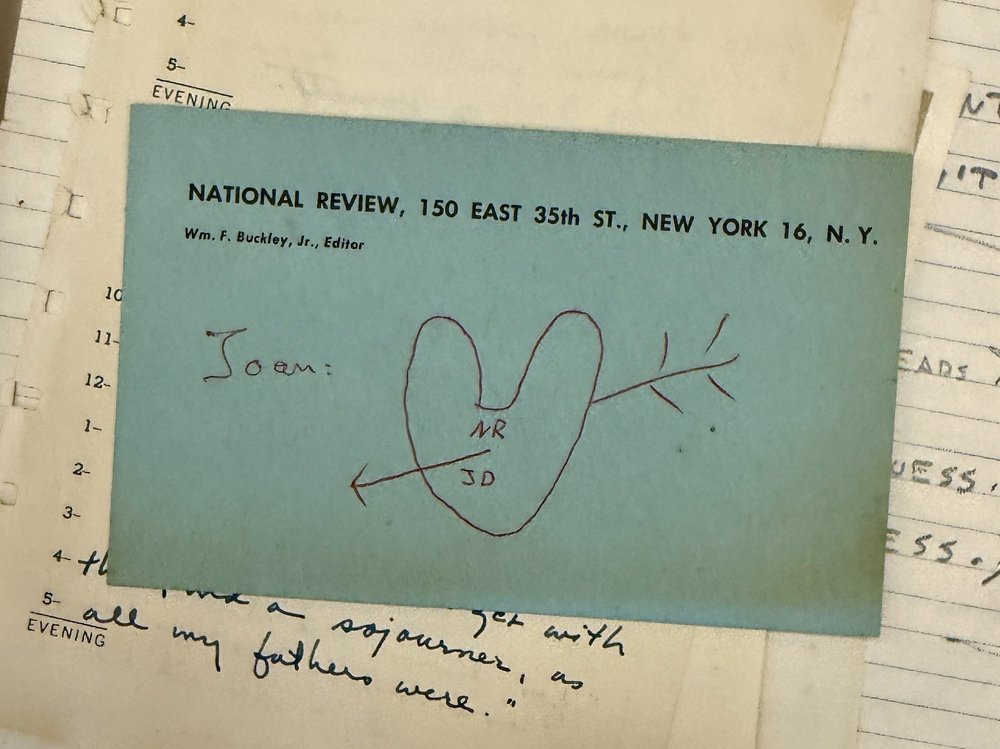
“I feel like everyone who’s there today should all hang out together after we close,” Mann said with a laugh. “Talk about Club Didion.”
A dozen boxes reviewed on a recent visit revealed intimate correspondence, quotidian miscellanea and everything in between – all filling in details of a personal life the literary giant kept largely separate from her public work.
Didion kept everything, including dinner party menus and guest lists (Calvin Trillin, Patti Smith and Harrison Ford were frequent visitors), recipe cards (in the 1960s, Didion apparently put mayonnaise in her guacamole), measurements for landscaping projects and ongoing correspondence to try to cancel her daughter’s Columbia House Record Club membership in the 1980s.

She also kept her early rejection letters from magazine publishers and from her undergraduate application to Stanford University (which she kept framed in her office). Didion collected business cards, Christmas cards, fan mail and reader complaints, and virtually every press clipping ever written about her.
Diligent researchers will find the first love letter her husband ever wrote her, on ultra-thin airmail stationery. Beside it are more than 100 recommendations Didion wrote, including one recommending her babysitter for a UCLA sports scholarship; another recommending her friend's child for admission to a selective middle school; one recommending her contemporary Susan Sontag for a prestigious fellowship; and one advocating for her landscaper's parole from federal prison.
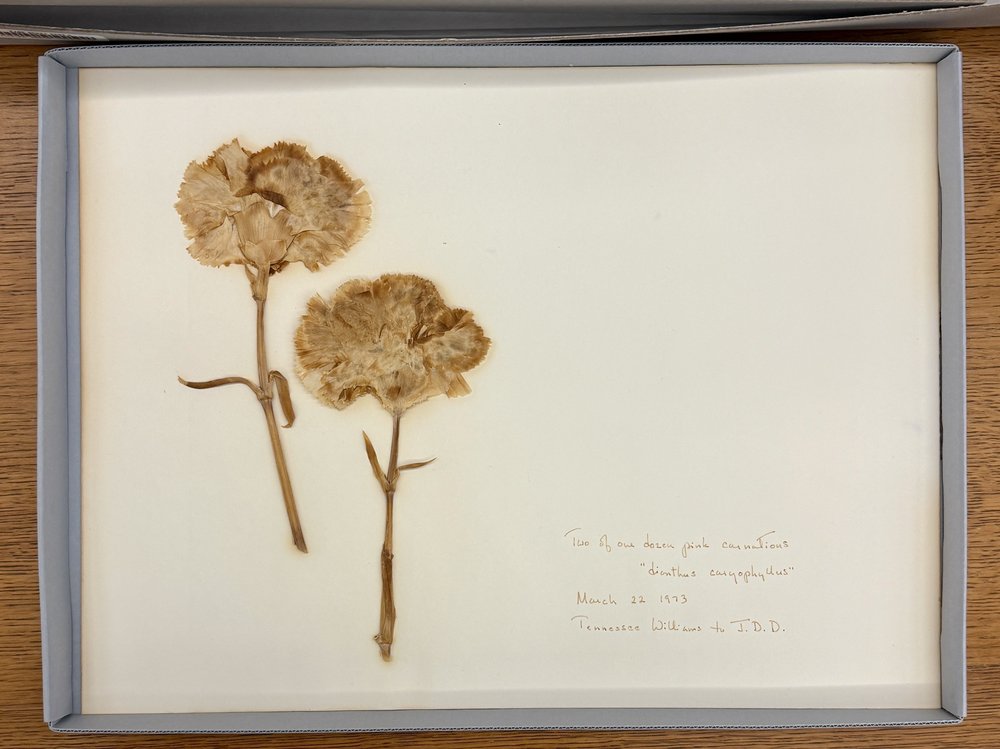
The archive shows the extent to which Didion and Dunne were involved in each others’ writing: one of Dunne’s famously vitriolic letters, upbraiding his dry cleaner for charging a late fee, bears her copy edits in red.
“You are the clowns that have currently lost four pillow sheets which you cannot seem to be able to find,” Dunne wrote.
“You are the clowns that have currently misplaced three pillow cases which you cannot seem to find,” Didion corrected.
“To be honest, I was surprised she didn’t destroy most of what’s in the archive,” said Champagne, the doctoral candidate, highlighting Didion’s day books, in which she recorded meticulous details of daily life, as particularly private.
“There’s stuff in there that I feel weird having access to, but it does give you a different view of her," she said. "It makes you realize how limited our understanding of Didion is if we just read her.”
Clarification: This story has been edited to clarify that Didion’s post therapy diaries are not included in the archive.
As Buy Nothing groups expand across NYC, so does the drama Williamsburg's Marlow & Sons to close on Sunday after 21 years